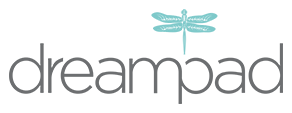
Sound Healing for Pain and Anxiety
Sound Healing for Pain and Anxiety: A New Study Highlights Dreampad’s Clinical Impact
A new clinical research project has confirmed what many Dreampad users have long reported: using sound-based therapy through the Dreampad device leads to a dramatic reduction in anxiety and pain. Conducted at a California pain management clinic, this 8-week study involved nearly 400 adult patients between the ages of 18 and 50, all living with chronic or acute pain. The results? A stunning 55% drop in self-reported anxiety levels — and a measurable improvement in pain tolerance and treatment outcomes.
The Study: Bringing Music Into Medicine
The research was led by Mary Anderson, DNP, and designed to answer a simple but powerful question:
“For patients aged 18–50 at a Pain Management Clinic, does the implementation of music therapy, compared to current practice, decrease anxiety during office visits over 8–10 weeks?”
To find out, patients were invited to participate in a clinical program integrating non-pharmacological music therapy using the Dreampad, a therapeutic audio device that delivers sound via gentle vibrations through the body. Each patient listened to 15 minutes of classical music delivered through the Dreampad prior to their pain treatment session.
Participants were assessed using the Visual Facial Anxiety Scale (VFAS) and the Visual Analog Scale (VAS) — two widely used tools to measure anxiety and pain. These assessments were administered both before and after the music therapy intervention.
The Results: Anxiety Cut in Half
Before the intervention, over 60% of patients at the clinic reported that anxiety interfered with their ability to complete treatment sessions. Many struggled with uncontrolled pain, leading to frequent missed appointments and poor satisfaction with care.
After the Dreampad-based music therapy was introduced:
-
Anxiety dropped from 60% to 27% among participants.
-
Missed appointments fell to under 2%.
-
The results were statistically significant with a p-value < 0.0001.
In short, the Dreampad made a measurable, positive difference in patients’ mental and physical well-being before undergoing treatment.
Why This Matters
Pain management is complex. While medications and procedures play a critical role, psychological factors like stress and anxiety can significantly impact outcomes. This study adds to the growing body of evidence supporting the use of non-drug interventions to enhance treatment effectiveness and improve the overall patient experience.
The Dreampad stands out because it doesn’t just play music — it delivers it through the body. Unlike traditional headphones or speakers, the Dreampad uses patented vibrational technology to transmit calming music directly through bone conduction, activating the parasympathetic nervous system and helping the body return to a relaxed state.
Patient-Centered and Safe
One of the most compelling aspects of this intervention is its safety and simplicity. Patients used the Dreampad in a quiet room for just 15 minutes prior to treatment. No side effects were reported. The device is:
-
Compatible with hearing aids and cardiac monitors
-
Discreet and easy to operate
-
Supportive of both physiological and emotional regulation
As one patient shared, “I never thought music could help me manage my anxiety this much. It felt like my body was being told it was okay to relax.”
Practical Implications for Healthcare Providers
For pain clinics and other healthcare providers, the study offers a scalable solution for improving outcomes without additional medications. The clinic staff received training via a video presentation and printed handouts, and Dreampad’s platform provided automated music updates and usage tips. Feedback from clinic staff was overwhelmingly positive, with many noting how easily the Dreampad fit into their existing workflows.
Additionally, the intervention helped improve overall treatment compliance. Patients were more likely to complete full sessions and less likely to cancel due to emotional distress. This translates not only to improved care, but also operational efficiency and reduced strain on healthcare staff.
Dreampad and the Broader Science of Music Therapy
While music therapy has been used for over a century — with early documented cases as far back as 1919 — this study modernizes that approach by leveraging technology to deliver targeted, body-based sound. Past research has shown that music can lower cortisol levels, reduce heart rate and blood pressure, and even enhance sleep quality.
This particular project reinforces those findings in a clinical, outpatient setting, and underscores the Dreampad’s unique value as a therapeutic tool. Its use of classical musical monotones, as recommended in prior studies, proved especially effective in calming the nervous system.
Barriers and Lessons Learned
Two main barriers were noted during implementation: language access and patient compliance in returning surveys. The study addressed these by:
-
Offering surveys in multiple languages
-
Allowing digital participation via mobile devices
-
Following up electronically post-treatment
These process improvements not only strengthened the study’s data integrity but also made the Dreampad program more inclusive and sustainable for real-world clinic settings.
Looking Ahead
The implications of this research go far beyond a single clinic. For patients struggling with chronic pain — whether from physical injury, autoimmune conditions, or neurological disorders — music therapy can be a powerful complement to traditional care.
And for people with anxiety — including those living with autism, PTSD, or insomnia — the Dreampad offers a calming, drug-free approach that works gently with the body’s own systems. It’s personalized, evidence-based, and now clinically validated.
Conclusion: A Sound Solution
This new study confirms what Dreampad users have said for years: sound, when delivered the right way, heals. With nearly 400 patients showing real, measurable improvements in just 8 weeks, the Dreampad isn’t just a pillow — it’s a revolution in how we think about wellness and care.
Whether you’re a healthcare provider looking for better patient outcomes or an individual seeking relief from anxiety and pain, the Dreampad offers an elegant, science-backed solution.
